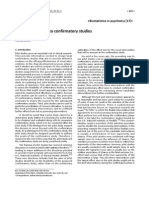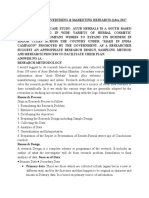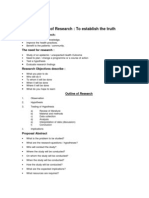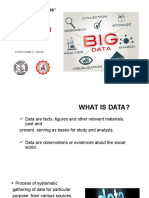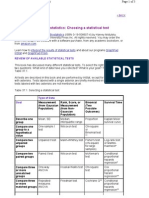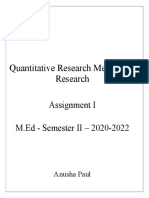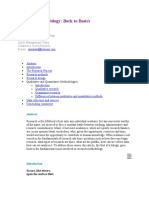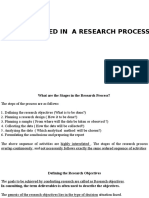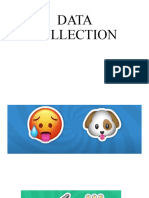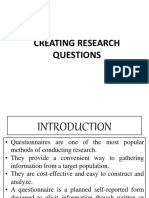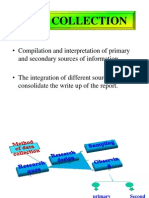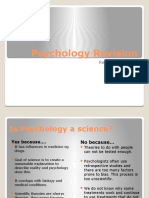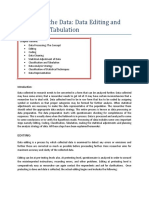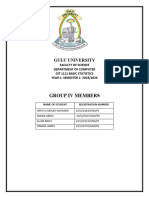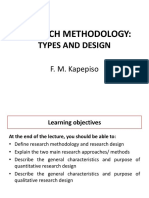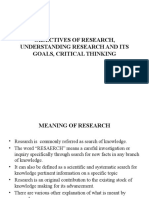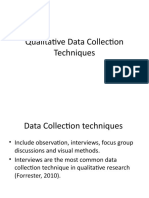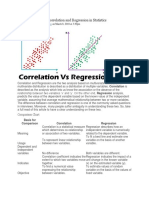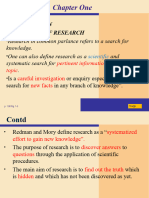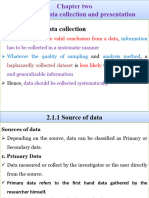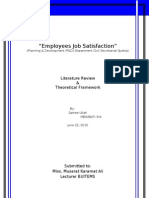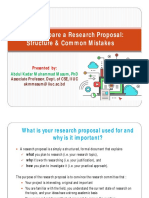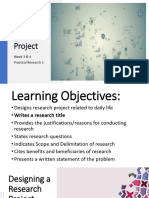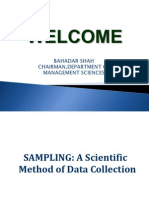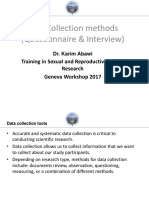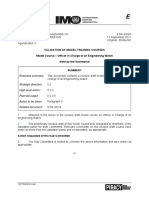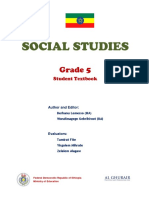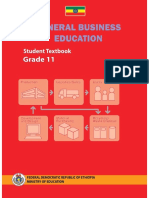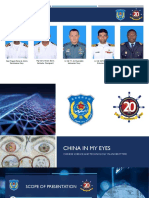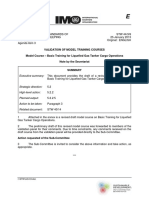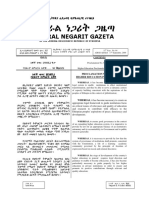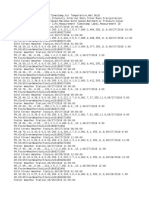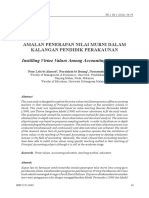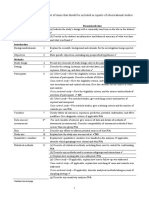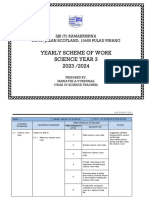Data Collecting Techniques
Lezebet
Kebede. Mary.Tekuamwerk
�Key Topics
Introduction
Need for Data Collection
Primary and Secondary Data
Primary Data Gathering Tools
Interview
Questionnaire
Observation
Case Study
Focus Group Discussion
Secondary Data Gathering Tools
Precautions of Using Secondary Data
Consequences of Improper Data Collection
Conclusion
�Introduction
Data
are the foundations of Economic Research
Data
refers to any group of facts, measurements, or
observations used to make inferences about the
problem of investigation
It
can range from material created in a laboratory, to
information obtained in social-science research, such
as a filled-out questionnaire, video and audio
recordings, or photographs, etc.
�Contd
Data
collection is the process of gathering and
measuring information on variables of interest in an
accepted and systematic fashion
It varies by discipline and data types; but the
emphasis on ensuring accurate collection remains the
same
No research project has unlimited funds
selection of the data usually is affected by the
priorities of cost and convenience
�Contd
Proper
data collection, retention, and sharing are,
therefore, vital to the research enterprise
So, try to design an experiment that creates
meaningful and unbiased data, that will not waste
resources
It will appropriately protect human subjects
If data are not recorded in a fashion that allows
others to validate findings, results can be called into
question
�Contd
Methodological issues researchers should be
aware of when selecting data
Data types (e.g., nominal, ordinal or
interval measures)
Samples ("frames") and sample size,
instruments
Methodologies
�Need For Data Collection
It is very essential in any educational research
to provide a solid foundation for it
It is something like the raw material that is
used in the production of quality data.
It provides a definite direction and definite
answer to a research inquiry
The data are needed to substantiate the
various arguments in research findings
It is to verify the hypotheses.
�Contd
Statistical data are used in two basic problems of any
investigation:
(a) Estimation of population parameters, which helps in
drawing generalization
b) The hypotheses of any investigation are tested by
data collection procedure.
The qualitative data are used to find out the facts and
quantitative data are employed to formulate new theory
or principles.
Data are also employed to ascertain the effectiveness of
new device for its practical utility.
Data are necessary to provide the solution of the problem
�Primary Data
Data
that came into being for the first time by
the people directly involved in the research. It
has not been previously collected
The data is derived from a new or original
research study and collected at the source,
It is the first hand evidence left behind by
participants or observers at the time of event.
�It can be collected through
-Interview
-Questionnaire
-Focus group discussion
-Case study
-Observation
12/22/2014
10
�Major Sources of Primary Data
Autobiographies, memoirs, diaries, emails,
Letters, correspondences, eyewitnesses
First-hand newspaper and magazine accounts of
events
Legal cases, treaties
Statistics, surveys, opinion polls, scientific data,
transcripts
Records of organizations and government agencies
�Advantages of Primary Data
It is original source of data
It is possible to capture the changes
occurring in the course of time.
It is flexible to the advantage of researcher.
�Disadvantages of Primary Data
Primary data is expensive to obtain
It is time consuming
It requires extensive research personnel who
are skilled
It is difficult to administer.
12/22/2014
13
�Secondary Data
It is data that have been already collected and
recorded by someone else and readily available
from other sources.
Advantages
Can be found more quickly and cheaply.
Most researches on past events or distant
places
have to rely on secondary data sources.
Less Expensive
It requires less activity (Field trip, Survey etc.)
�Disadvantages
Not easily available
Not adequate
May not meet the needs of researcher
Outdated information
Variation in definition
�Data Collecting Techniques
Tekuamwerk
Kebede. Lezebet.Mary
�Primary Data Gathering Tools
The most important primary data gathering tools are
the following.
Interview
It is a two-way conversation where one person
interviews another person for detailed information.
An interview is a conversation between two or more
people where questions are asked by the interviewer
to elicit facts or statements from the interviewee.
The most common types of interview are
unstructured, semi-structured and structured
interviews
�Structured Interview
Structured interviews are a means of collecting
data for a statistical survey.
In this case, the data is collected by an
interviewer rather than through a selfadministered questionnaire.
The choice of answers to the questions is often
fixed (close-ended) in advance, though openended questions can also be included within a
structured interview.
Carefully worded questionnaire is administered
and the emphasis is on obtaining answers to
carefully phrased questions .It is also known as
formal interview.
�Advantages of structured Interview
It enables the researcher to examine the level
of understanding a respondent has about a
specific topic - usually a lot more depth than
with a postal questionnaire.
All respondents are asked the same questions
in the same manner. This makes it easy to
replicate the discussion(is easy to regulate or
standardize).
�contd
It can be used as an influential form of
formative assessment. It can be used to
discover how a respondent feels about a
specific topic before using a second method
(such as in-depth interviewing or observation)
to collect a superior depth of information.
Structured interviews can also be used to
recognize respondents whose views you may
want to discover in more detail.
�Disadvantages of structured Interview
Can be time consuming if a sample group is very large
(this is because the researcher or their representative
needs to be present for each structured interview).
The quality and convenience of the information is vastly
dependent on the quality of the questions asked. The
interviewer cannot change the questions; they must all
stay the same.
The format of questionnaire design makes it tricky for the
researcher to examine intricate issues and opinions. Even
where open-ended questions are used, the depths of
answers the respondent can provide often are more
limited than with almost any other method.
�Semi structured Interview
A semi-structured interview is a qualitative
method of inquiry that combines a pre-determined
set of open questions (questions that prompt
discussion) with the opportunity for the
interviewer to explore particular themes or
responses further.
A semi-structured interview does not limit
respondents to a set of pre-determined answers
(unlike a structured questionnaire).
�Advantages of Semi structured Interview
Provides valuable information from context of
participants (and stakeholder) experiences
Use of pre-determined questions provides uniformity
Many researchers like to use semi-structured
interviews because questions can be prepared ahead of
time. This allows the interviewer to be prepared and
appear competent during the interview.
Semi-structured interviews also allow informants the
freedom to express their views in their own terms.
Semi-structure interviews can provide reliable,
comparable qualitative data.
�Disadvantages of Semi structured Interview
Can be time consuming to collect and analyses
data
Requires some level of training or practice in
order to prevent interviewer suggesting
answers
�Un Structured Interview
An unstructured interview is an interview in
which questions are not prearranged (although
some questions may be prepared in advance),
allowing for spontaneity and for questions to
develop during the course of the interview.
This is considered to be the opposite of a
structured interview which offers a set amount
of standardized questions.
�Advantages of unstructured Interview
In an unstructured interview the interviewer
is able to discover important information
which did not seem relevant before the
interview and ask the interviewee to go
further into the new topic.
An unstructured interview allows for the
interviewer to build better rapport with the
interviewee due to its parallels with a normal
conversation. For this reason they are often
considered to be better at researching
sensitive subjects, such as domestic violence.
�Contd
Unstructured
interviews can be used
when asking about something personal
,the interview could go off topic to make
the persons taking the interview feel
comfortable
Allow
flexibility in administering
interview to individuals
�Disadvantages of unstructured Interview
Unstructured interviews are a lot more time
consuming. This is due to their being no set
questions and a priority of elaborated answers
making it difficult to determine and enforce a set
time.
It Need well-qualified, highly trained
interviewers.
Interviewee may distort information.
Difficult to analyze responses
12/22/2014
28
�Interview could be carried out through:
Face to face personal interview
By telephone interview
By mail or e-mail, or
By a combination of all these
Generally, when we collect data through
interview, we can use tap reorder, video
recorder or box ticking instrument.
�Questionnaire
A research instrument consisting of a series of
questions and other prompts for the purpose
of gathering information from respondents.
It is a set of questions for obtaining
statistically useful or personal information
from individuals.
It is a written or printed questionnaire often
with spaces for answers.
Especially useful for obtaining information
about opinions and attitudes
�Contd
Basic types of questionnaire closed ended and
open-ended
Closed Ended Questionnaire:- is a question format
that limits respondents with a list of answer
choices from which they must choose to
answer the question.
Commonly these type of questions are in the
form of multiple choices, either with one
answer or with check-all-that-apply
�Advantages of Closed Ended Questions
it is easier and quicker for respondents to answer
the answers of different respondents are easier to
compare
answers are easier to code and statistically
analyses
the response choices can clarify question meaning
for respondents
respondents are more likely to answer about
sensitive topics
�Disadvantages of Closed Ended Questions
respondents with no opinion or no knowledge can
answer anyway
respondents can be frustrated because their desired
answer is not a choice
it is confusing if many response choices are offered
misinterpretation of a question can go unnoticed
distinctions between respondent answers may be
blurred
clerical mistakes or marking the wrong response is
possible
they force respondents to give simplistic responses to
complex issues
they force people to make choices they would not make
in the real world
�Open Ended Questionnaire
Open-ended questions are those questions that
will solicit additional information from the
inquirer. Sometimes called infinite response or
unsaturated type questions.
Open-ended questions are one that require more
than one word answers. The answers could come
in the form of a list, a few sentences or something
longer such as a speech, paragraph or essay.
Open-ended questions require a response with
more depth and a lengthier response. Open-ended
questions are also helpful in finding out more
about a person or a situation
�Advantages of Open Ended Question
It permits an unlimited number of possible
answers.
Respondents can answer in detail and can
qualify and clarify responses
unanticipated findings can be discovered
It permit adequate answers to complex issues
It
permit creativity, self-expression, and
richness of detail
It reveal respondents logic, thinking process,
and frame of reference
�Disadvantages of Open Ended Question
different respondents give different degrees of
detail in answers
responses may be irrelevant or buried in useless
detail
comparisons and statistical analysis become
difficult
coding responses is difficult
questions may be too general for respondents
who lose direction
a greater amount of respondent time, thought,
and effort is necessary
respondents can be intimidated by questions
�Data Collecting Techniques
Mary
Kebede.Lezebet.Tekuamwerk
�OBSERVATION
Observation
is a systematic noting and
recording of events, behaviors, and artifacts
(objects) in the social setting which are chosen
for study.
The
term may also refer to any
collected during the scientific activity.
In
living
senses.
beings,
observation
employs
data
the
�In science, observation can also involve the
recording of data via the use of instruments.
It helps to gather first data and gives the
opportunity to collect data on a wide range of
behaviors.
�METHODS OF OBSERVATION
Direct and indirect observation
In direct method of observation one comes
to know how the observer is physically
present, in which type of situation he is
present and then this type of observation
monitors what is going on the place.
Indirect
method of observation involves
studies of mechanical recording or the
recording by some of the other means like
photographic or electronic.
Direct observation is relatively straighter
forward as compared to the indirect
observation.
�Participatory and non-participatory
observation
Participation by the observers with the various
types of operations of the group under study
refers to the participant type of observation.
But in the non participant type of observation,
no participation of the observer in the activities
of the group takes place and also there occurs
no relationship between the researcher and the
group.
�Structured and unstructured
observation
Structured observation works according to a
plan and
the operations that are to be
observed and the various features that are
to be noted or recorded are decided well in
advance.
But in unstructured observation, observer has
the freedom to note down what he or she
feels is correct and relevant to the point of
study and also this approach of observation is
very suitable in the case of exploratory
research.
�ADVANTAGES OF OBSERVATION
Provide direct information about behavior of
individuals and groups.
Allow researcher to learn about things the
participants may be unaware of or unwilling to
discuss in an interview or focus group.
Provide good opportunities
unanticipated outcomes
for
identifying
�DISADVANTAGES OF OBSERVATION
Expensive and time consuming.
Need well-qualified, highly trained observers.
May affect behavior of participants.
Selective perception of observer may distort
data.
Investigator has little control over situation.
Behavior or set of behaviors observed may not
be typical
�CASE STUDY
Case study is the act or an instance of
analyzing one or more particular cases or case
histories
with
a
view
to
making
generalizations. Or It is detailed intensive
study of a unit, such as a corporation or a
corporate division that stresses factors
contributing to its success or failure.
REASONS TO PERFORM CASE
o Serve as pilot research
o To develop new theories
STUDIES
�ADVANTAGES OF CASE STUDY
Case studies allow a lot of detail information
to be collected that would not easily obtained
by other research designs.
Case studies tend to be conducted on rare
cases where large samples of similar
participants are not available.
Case studies can help experimenters to adapt
ideas and produce novel hypotheses which can
be used for later testing.
�DISADVANTAGES OF CASE STUDY
The data collected cannot necessarily be generalized to
the wider population. This leads to data being collected
over longitudinal case studies not always being relevant
or particularly useful.
Some case studies are not scientific.
Case studies are generally on one person. This can lead
to bias in data collection, which can influence results
more than in different designs.
It is also very difficult to
cause/effect from case studies.
12/22/2014
draw
definite
47
�Data Collecting Techniques
Kebede
Lezebet.Tekuamwerk.Mary
12/22/2014
48
�Focus Group Discussion
It is a group discussion guided by a facilitator,
during which group members talk freely and
spontaneously about a certain topic.
Type of qualitative research where small
homogenous groups of people are brought
together to informally discuss specific topics
under the guidance of a moderator
12/22/2014
49
�The group of individuals are expected to have
experience or opinion on the topic and
selected by the researcher.
Its purpose is to obtain in-depth information
on concepts, perceptions and ideas of a group.
It is more than a question-answer interaction.
Group members discuss the topic and interact
among themselves with guidance from the
facilitator.
12/22/2014
50
�Reasons to use focus group
Discussion
To draw upon respondents attitudes, feelings,
beliefs, experiences and reactions.
Compared to individual interviews, which aim
to obtain individual attitudes, beliefs and
feelings, focus groups elicit a multiplicity of
views and emotional processes within a group
context.
12/22/2014
51
�Advantages of Focus Group
Discussion
Obtaining data from children or from
individuals who are not particularly literate.
Provide data more quickly and at lower cost
than if individuals interviewed separately,
Groups can be assembled on shorter notice
than for a more systematic survey.
12/22/2014
52
�Requires less preparation and is comparatively
easy to conduct.
Researcher
can
interact
directly
with
respondents (allows clarification, follow-up
questions, probing). Can gain information from
non-verbal responses to supplement (or even
contradict) verbal responses.
Data uses respondents' own words; can obtain
deeper levels of meaning, make important
connections, identify subtle nuances.
12/22/2014
53
�Very flexible; can be used with wide range of
topics, individuals, and settings.
Results are easy to understand and more
accessible to lay audiences or decision-makers
than complex statistical analyses of survey
data.
12/22/2014
54
�Disadvantages of Focus
Group Discussion
Have less control over group; less able to
control what information will be produced .
Produces relatively chaotic data making data
analysis more difficult.
Small numbers and convenience sampling
severely limit ability to generalize to larger
populations.
12/22/2014
55
�Requires carefully trained interviewer who is
knowledgeable
about
group
dynamics.
Moderator may knowingly or unknowingly bias
results by providing clues about what types of
responses are desirable.
Uncertainty
about
accuracy
of
what
participants say. Results may be biased by
presence of a very dominant or opinionated
member; more reserved members may be
hesitant to talk.
12/22/2014
56
�Secondary Data Gathering Tools
Secondary data
data someone else has collected
Documents (reports of various kinds, books,
periodicals, reference books (encyclopedia),
university publications (thesis, dissertations,
etc.),
policy
documents,
statistical
compilations, proceedings, personal documents
(historical documents, Data archives, etc.
12/22/2014
57
�Secondary Data
It is data that have been already collected and
recorded by someone else and readily available
from other sources.
Advantages
Can be found more quickly and cheaply.
Most researches on past events or distant
places
have to rely on secondary data sources.
Less Expensive
It requires less activity (Field trip, Survey etc.)
�Disadvantages
Not easily available
Not adequate
May not meet the needs of researcher
Outdated information
Variation in definition
�Precautions of Using Secondary
Data
Before using secondary data, researcher
must see that they possess the following
characteristics;
Reliability of Data: The reliability can
be tasted by finding out such things
about the data:
12/22/2014
60
�Who collected the data?
What were the sources of data?
Were they collected by using proper
methods?
At what time were they collected?
Was there any bias of the compiler?
What level of accuracy was desired?
What is achieved?
12/22/2014
61
�Suitability of Data: the data that is suitable
for one research may not necessarily be found
suitable in another research.
If the available data are found unsuitable, they
should not be used by the researcher.
The researcher must very carefully scrutinize
the definition of various terms and units of
collection used at the time of collecting the data
from the primary source originally.
12/22/2014
62
�The object, scope and nature of the original
data must also be studied.
If the researcher gets differences in this, the
data will remain unsuitable for the present
research and should not be used.
12/22/2014
63
�Adequacy of Data: If the level of accuracy
achieved in data is found inadequate for the
purpose of the present research, they will be
considered as inadequate and should not be used
by the researcher.
Therefore, one should use the available data
only when they are found to be reliable, suitable
and adequate.
12/22/2014
64
�Consequences of Improper Data Collection
Inability
study.
to
repeat
and
validate
the
Distorted, inaccurate findings.
Wasted resources.
Misleading other researchers.
Compromised decisions for public policy or
private decision-making.
12/22/2014
65
�Harm to human participants
More importantly, poor collection may cause
harm when the results of the flawed research
are
used
to
support
public
policy
recommendations.
12/22/2014
66
�Conclusion
Data are factual information used as a basis
for reasoning, discussion and research. Data
collection is a systematic approach to gathering
information from a variety of sources to get a
complete and accurate picture of an area of
interest.
Primary data sources are:- interview,
questionnaire, observation, focus group
discussion and case study.
12/22/2014
67
�Secondary data are any source cited for
its second-hand information from a
different work.
It also pertains on the data which are
already collected by other person who are
entitled to organize a data. Secondary
data may be available in published or
unpublished form.
12/22/2014
68
�Generally, data collection requires a
rigorous and detailed recruitment and
training plan for data collectors. It is
critical that researchers have sufficient
skills to ensure the integrity of their
data collection efforts.
12/22/2014
69
�Thank You
12/22/2014
70
